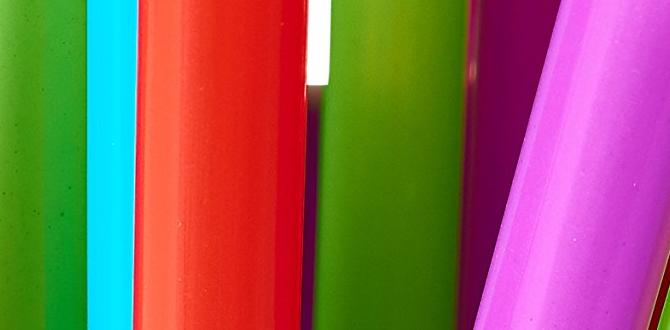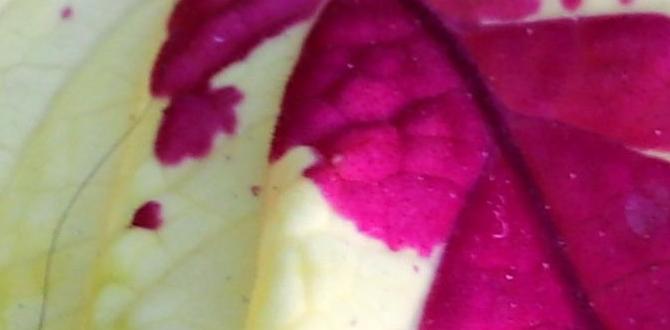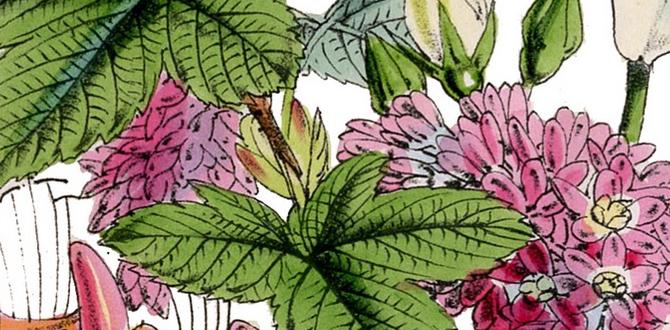Grow fresh mint year-round with this simple guide! Learn how to cultivate vibrant, aromatic mint plants on your windowsill, bringing a touch of green and delicious flavor to your kitchen with minimal fuss. This guide makes indoor mint growing easy for anyone, no matter your gardening experience.
Bring the Freshness Indoors: Your Guide to Growing Mint at Home
Dreaming of fresh mint for your tea, cocktails, or summer salads, but don’t have a sprawling garden? You’re not alone! Many budding gardeners find themselves wondering if they can truly grow herbs indoors, especially one as vigorous as mint. The good news is, growing mint indoors is surprisingly simple and incredibly rewarding. It’s a common frustration for beginners to think they need a lot of space or perfect conditions to start gardening. We’re here to show you that with just a little light, water, and a cozy spot, you can have your own mint patch right on your kitchen counter!
This essential guide will walk you through everything you need to know. From choosing the right mint variety to keeping pests away, we’ll cover it all. Get ready to watch your mint thrive and enjoy the wonderful aroma and taste it brings into your home. Let’s get planting!
Why Grow Mint Indoors? The Breezy Benefits
Before we dig into the “how,” let’s celebrate the “why”! Bringing mint indoors offers a bouquet of benefits that go beyond just having fresh herbs on hand. It’s a small effort that yields big rewards, making it a fantastic starting point for any indoor gardener.
- Constant Freshness: Imagine stepping into your kitchen and snipping fresh mint for a mojito or a soothing cup of tea, no matter the weather outside. Indoor mint means access to that vibrant flavor and aroma 24/7.
- A Touch of Green: Plants brighten any space, and mint is no exception. Its lush green leaves can add a calming, natural element to your home decor, especially in smaller living spaces or apartments.
- Air Purification (Little Helper!): While not a powerhouse air purifier, most houseplants contribute to a healthier indoor environment by converting carbon dioxide into oxygen. Mint adds its greenery to this natural process.
- Aromatherapy Boost: The scent of mint is invigorating and can help reduce stress and improve focus. Simply brushing past your mint plants releases their delightful fragrance.
- Creative Cooking: Elevate your culinary creations! From desserts and drinks to savory dishes, fresh mint adds a unique, cooling zest that dried herbs just can’t replicate.
- Educational Fun: Growing mint indoors is a fantastic way to teach children about where food comes from and the joys of nurturing a living thing. It’s a hands-on lesson in patience and nature.
Mint Varieties Perfect for Indoor Adventures
Mint is an expansive family, and while most varieties are happy to grow indoors, some are particularly well-suited for the cozy confines of a pot. Understanding these differences can give your indoor mint garden the best start.
When choosing your mint, consider what you’ll use it for most. Some mints are more traditionally used for teas, while others shine in culinary dishes or cocktails.
Popular Indoor Mint Varieties:
- Peppermint (Mentha x piperita): This robust variety is famous for its strong, cooling menthol flavor. It’s excellent for teas, candies, and soothing digestive aids. It tends to be quite vigorous.
- Spearmint (Mentha spicata): Gentler and sweeter than peppermint, spearmint is the go-to for culinary uses, particularly in Middle Eastern dishes, salads, and, of course, mojitos. It’s also a very common and easy-to-grow type.
- Chocolate Mint (Mentha x piperita ‘Chocolate’): A fun variation with a subtle chocolatey aroma and a hint of mint. It adds a unique twist to desserts and hot chocolate.
- Apple Mint (Mentha suaveolens): Characterized by its fuzzy, rounded leaves and a soft, fruity scent resembling apples. It’s lovely in teas and fruit salads.
- Lemon Mint (Mentha citrata): Also known as orange mint due to its citrusy aroma. It’s a refreshing addition to teas, ice cream, and water infusions.
While all mints can grow indoors, peppermint and spearmint are often the most recommended for beginners due to their resilience and widespread availability. They are hardy and less prone to finicky issues when starting out.
Getting Started: What You’ll Need to Grow Mint Indoors
You don’t need a fancy greenhouse or specialized equipment to grow mint indoors. With a few basic supplies, you’ll be well on your way to a thriving indoor herb garden. Think of these as your mint-growing essentials:
Essential Supplies for Your Indoor Mint Garden:
- Mint Cuttings or Young Plant: You can start from seeds, but cuttings or a nursery plant are faster and more reliable for beginners.
- Potting Mix: A good quality, well-draining potting soil is key. Avoid garden soil, which can become too compacted in pots. Look for a mix formulated for containers or houseplants.
- Containers/Pots: Choose pots at least 6 inches in diameter with drainage holes. Terracotta, plastic, or ceramic pots all work well.
- Watering Can or Bottle: For gentle watering.
- Sunny Spot: A windowsill that receives at least 4-6 hours of direct sunlight daily is ideal.
- Optional: Saucer or Tray: To catch excess water and protect your surfaces.
How to Grow Mint Indoors: A Step-by-Step Journey
Ready to get your hands dirty (but not too dirty!)? Growing mint indoors is a straightforward process. Follow these simple steps, and you’ll be harvesting your own fragrant leaves in no time.
Step 1: Choosing Your Starting Point (Seeds vs. Cuttings vs. Plant)
For beginners, starting with a young plant from a nursery or garden center is the easiest and fastest method. If you have access to a friend’s healthy mint plant, taking cuttings is an excellent, cost-effective option. Growing from seeds is possible but can be slower and sometimes less predictable for some mint varieties.
Step 2: Potting Your Mint
- Select the Right Pot: Ensure your pot is clean and has drainage holes at the bottom. Mint roots like a bit of room, so a pot at least 6 inches in diameter is a good start. You can always repot into a larger container if your plant outgrows it.
- Add Potting Mix: Fill the pot about two-thirds full with your well-draining potting mix. Gently moisten the soil so it’s damp but not waterlogged.
- Planting Cuttings or Nursery Plant:
- For cuttings: Trim a healthy stem just below a set of leaves, remove the lower leaves, and insert the cut end into the moist potting mix. You can place several cuttings in one pot.
- For nursery plants: Gently remove the mint plant from its original container. If the roots are tightly bound (root-bound), carefully loosen them with your fingers. Place the plant in the new pot so the top of the root ball is about an inch below the rim.
- Fill and Water: Fill the rest of the pot with potting mix, pressing gently around the base of the plant. Water thoroughly until water drains from the bottom of the pot. This helps settle the soil.
Step 3: Finding the Perfect Home (Light & Temperature)
Mint loves light! Place your potted mint in a location where it can receive at least 4-6 hours of direct sunlight each day. A south-facing or west-facing windowsill is usually ideal. If you don’t have enough natural light, consider using a grow light.
Mint prefers moderate temperatures, similar to what we enjoy indoors. Aim for temperatures between 65-70°F (18-21°C). Avoid placing it near drafty windows or direct heat sources, which can stress the plant.
Step 4: Watering Wisely
This is where many new gardeners get tripped up! Mint likes consistently moist soil, but it hates sitting in soggy conditions, which can lead to root rot. The best approach is to water when the top inch of soil feels dry to the touch.
- Check the soil by sticking your finger about an inch deep.
- If it feels dry, water thoroughly until water runs out of the drainage holes.
- Discard any excess water that collects in the saucer after about 30 minutes.
- Avoid frequent, small sips of water, as this encourages shallow root growth. Water deeply less often.
Step 5: Feeding Your Mint (Fertilizing)
Mint isn’t a heavy feeder, especially when grown in good quality potting mix. For indoor mint, fertilizing every 4-6 weeks during the spring and summer growing season is usually sufficient. Use a balanced liquid fertilizer diluted to half strength. Stop fertilizing in the fall and winter when growth naturally slows down.
Step 6: Pruning and Harvesting for Bushy Growth
Regularly pruning and harvesting your mint is not just for getting fresh leaves; it’s crucial for encouraging bushier, fuller growth! When your mint plant is about 6 inches tall, pinch off the top few leaves. This encourages side shoots to develop, making your plant more dense.
- How to Harvest: To harvest, snip stems just above a leaf node (where leaves meet the stem). This encourages the plant to produce new shoots from that point.
- Don’t Take Too Much: Never remove more than one-third of the plant at a time. Allow it to recover and continue growing.
- Deadheading: If you see any flowers forming, pinch them off. Flowering can sometimes make the leaves less flavorful and less productive.
Troubleshooting Common Mint Mishaps
Even with the best intentions, sometimes our green friends present a puzzle. Here are a few common issues you might encounter with indoor mint and how to solve them before they become big problems.
Problem: Yellowing Leaves
Cause: This is often a sign of overwatering or poor drainage, leading to root rot. It can also indicate a lack of light or nutrient deficiency.
Solution: Check your watering habits – ensure the soil is drying out slightly between waterings and that drainage is good. Move your plant to a brighter spot if needed. If you suspect a nutrient issue and have been fertilizing regularly, try a half-strength dose of balanced liquid fertilizer.
Problem: Leggy, Sparse Growth
Cause: The plant isn’t getting enough light or needs pruning.
Solution: Relocate your mint to a sunnier windowsill, or supplement with a grow light. Regularly pinch back the stems to encourage bushier growth. Remember, those cuttings can be used to start new plants!
Problem: Wilting Plant
Cause: This can be tricky as it can mean either too much or too little water!
Solution: First, check the soil moisture. If it’s bone dry, give it a good watering. If the soil is moist, the roots might be waterlogged, and you may need to check drainage and adjust your watering schedule. Wilting can also occur if the plant is severely root-bound; consider repotting.
Problem: Pests (Spider Mites, Aphids)
Cause: Pests are more common when conditions are too dry or when plants are stressed. They can hitchhike on new plants.
Solution: Inspect your plant regularly, especially the undersides of leaves. For minor infestations, spray the plant with a strong jet of water. You can also use insecticidal soap or neem oil (follow product instructions carefully). A humid environment (misting occasionally) can deter spider mites. For further reading on pest management, the MSU Extension provides excellent, science-based guidance on integrated pest management.
Essential Tools for Mint Maintenance
While you can get by with just your hands and a watering can, a few simple tools can make caring for your indoor mint even easier and more effective. These aren’t expensive and can be used for many other houseplants too!
| Tool | Purpose | Why It Helps Mint |
|---|---|---|
| Small Hand Pruners or Scissors | For clean cuts when harvesting or pruning. | Prevents tearing stems, which can lead to disease. Encourages healthy regrowth. |
| Watering Can with a Long Spout | Delivers water precisely to the soil base. | Reduces leaf wetness, helping to prevent fungal issues, and prevents soil splashing. |
| Moisture Meter | Tests soil moisture level. | Helps prevent over or under-watering by giving an accurate reading of soil hydration. |
| Potting Trowel | For adding or replacing soil when repotting. | Makes the task of repotting quick and mess-free. |
Repotting Your Thriving Mint
As your mint plant grows, it might start to look a little crowded in its pot, or you might notice the soil drying out much faster than before. This is a sign it’s time to repot!
Generally, mint grown indoors will need repotting every 1-2 years. The best time to do this is in the spring, coinciding with its active growing season.
When to Repot:
- Roots are growing out of the drainage holes.
- The plant dries out very quickly after watering.
- Growth seems stunted, even with proper care.
How to Repot:
- Choose a new pot that is 1-2 inches larger in diameter than the current one. Ensure it has drainage holes.
- Gently slide the mint plant out of its current pot. If it’s stuck, tap the sides of the pot or run a knife around the edge.
- Examine the roots. If they are tightly wrapped around the bottom, gently loosen them with your fingers.
- Add a layer of fresh potting mix to the bottom of the new pot.
- Place the mint plant in the new pot, ensuring the top of the root ball is about an inch below the rim.
- Fill in the sides with fresh potting mix, pressing gently.
- Water thoroughly until water drains from the bottom.
Beyond the Basics: Keeping Your Mint Happy Indoors
Once you have your mint established, a few extra tips can ensure it stays happy and productive all year round. These are small adjustments that make a big difference.
Humidity Considerations
While mint isn’t overly fussy about humidity, consistent indoor air can sometimes be dry, especially in winter. If you notice the edges of your leaves becoming crispy, you can try:
- Misting: Lightly mist the leaves with water occasionally.
- Pebble Tray: Place the pot on a tray filled with pebbles and water. As the water evaporates, it creates a humid microclimate around the plant. Ensure the bottom of the pot isn’t sitting directly in the water.
Preventing Overgrowth and Spreading
Mint is famous for its vigorous, spreading nature. While this is great when you want lots of mint, indoors, it means you might need to manage its growth.
- Regular Pruning: As mentioned, consistent harvesting and pinching back are your best tools.
- Dedicated Pots: Never plant mint directly in the ground outdoors, and for indoor growing, keep it in its own pot. If you planted cuttings or a nursery plant, it should already be in a container.
- Dividing: If your plant becomes very large and bushy, you can carefully divide the root ball when repotting into two or more smaller plants, giving you more mint to enjoy or share!
The Importance of Good Air Circulation
Good airflow helps prevent fungal diseases and keeps pests at bay. If your space feels a bit stagnant, consider opening a window periodically or using a small, low-speed fan to gently circulate air around your plants.
Frequently Asked Questions about Growing Mint Indoors
Q1: Can I grow mint from seeds indoors?
Yes, you can grow mint from seeds, but it’s generally slower and can be less predictable than starting from cuttings or a young plant. If starting from seed, sow them about 1/4 inch deep in moist potting mix, keep them consistently moist and warm (around 70°F/21°C), and be patient, as germination can take 10-14 days or even longer.
Q2: How often should I water my indoor mint?
Water your mint when the top inch of soil feels dry to the touch. This usually






